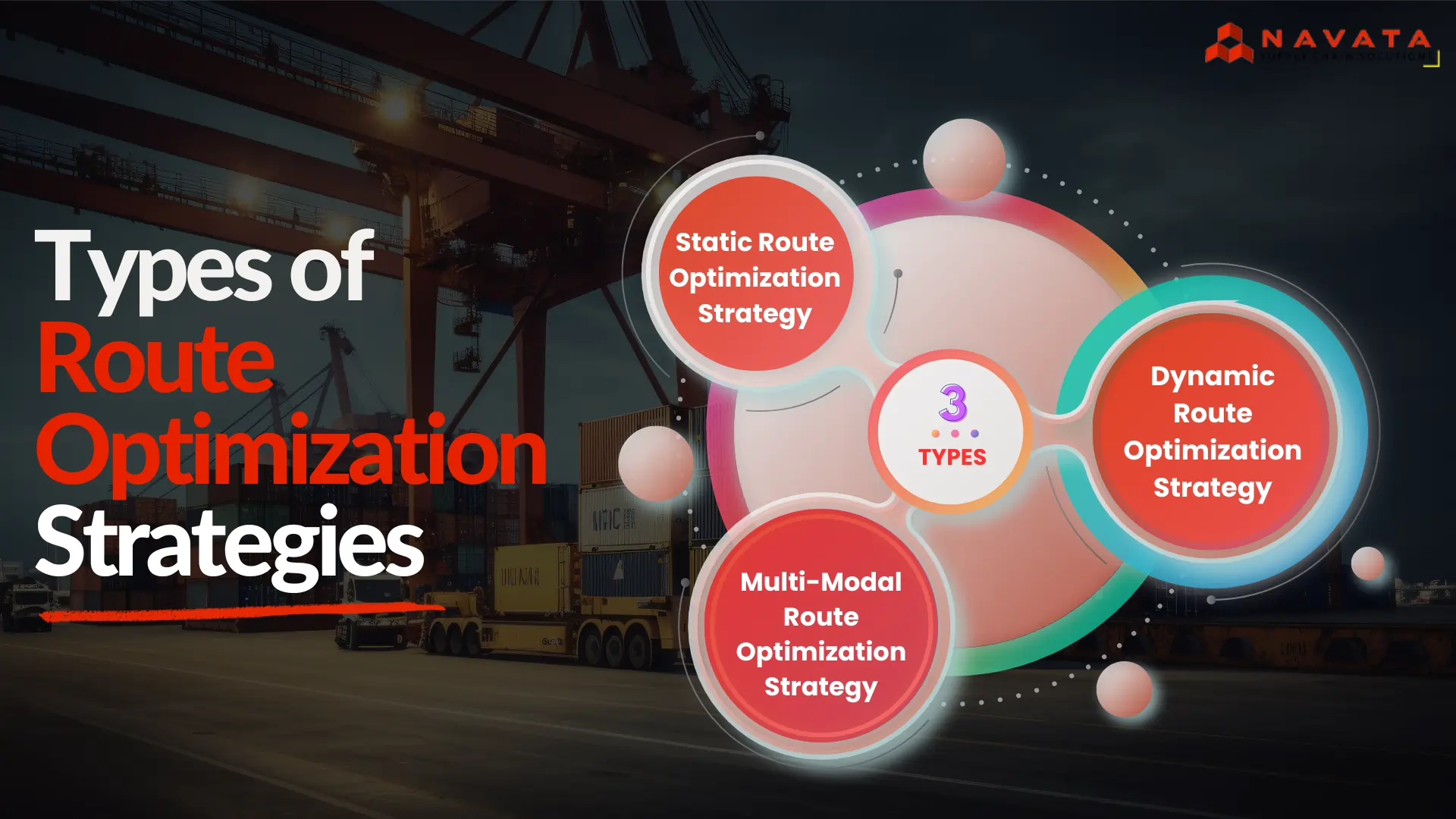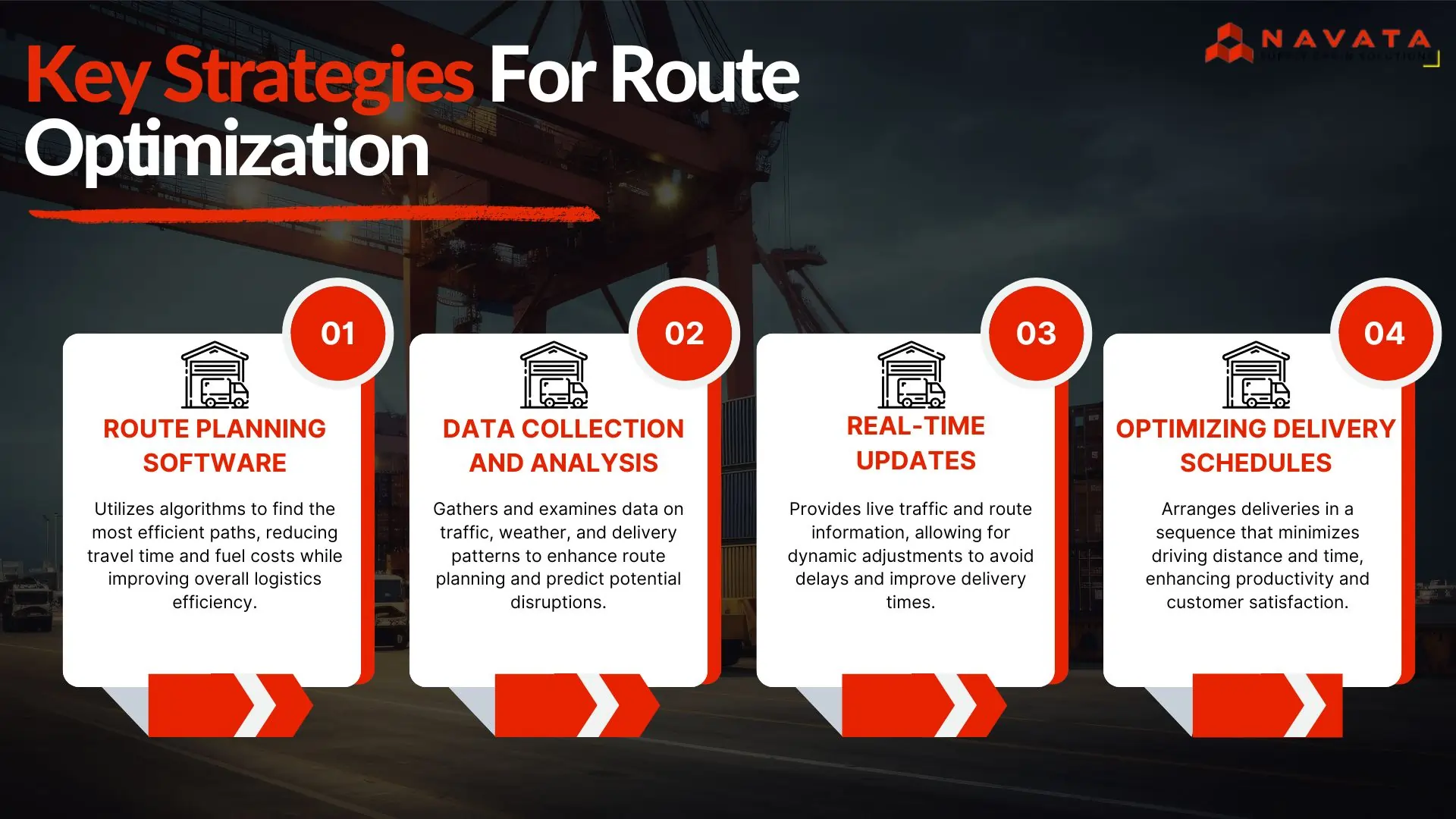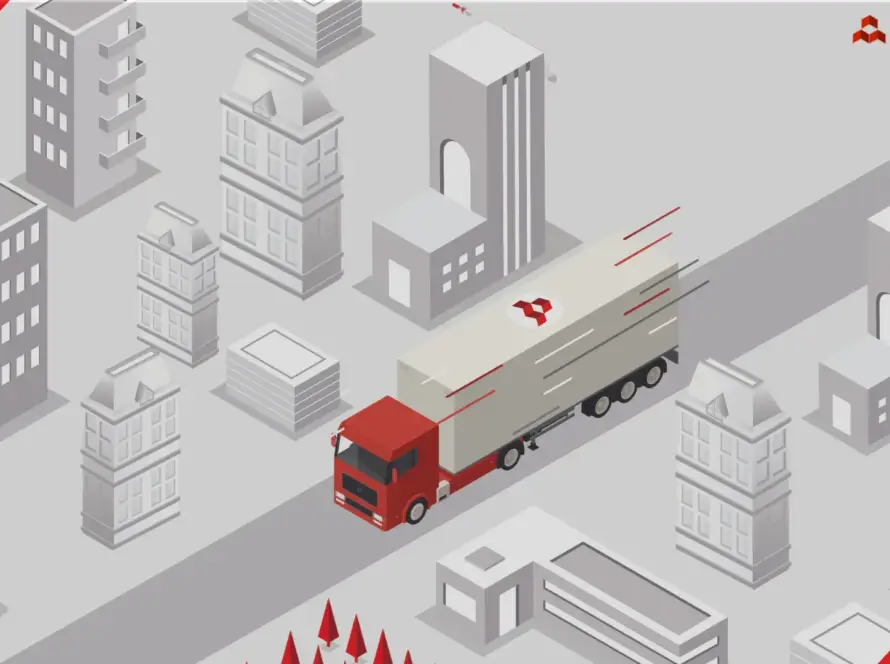Route Optimization Strategies
Route optimization is the process of determining the most cost-effective route. It extends well beyond the delivery from point A to point B. Route planning is subject to numerous constraints, including time, money, operator, circumstances, communication, and technology. The most recent route optimization algorithms focus on overcoming these limits through efficient solutions. Using real-time and historical data is the most important step in determining the best route.
Companies must adapt to the existing conditions as new digital trends emerge. There are still some traditional methods for route optimization. The most traditional method is to create routes manually. However, it is hazardous and inefficient. Manually optimized routes do not allow for time savings or cost control.
Why? Because there will always be costly human errors, a lack of rapid response, and a lack of instant response capability. Most importantly, manual route optimization will always be a difficulty for expanding your firm.
Route optimization is crucial in a variety of commercial fields. Route optimization solutions assist more than only logistics and shipping enterprises. Every firm that needs to manage a fleet of vehicles may benefit.

Types of Route Optimization Strategies
Static Route Optimization Strategy
Static routing is the process of arranging transportation routes based on geographical areas on a yearly or semiannual basis. The purpose is to forecast the most efficient truck routes to frequently used depots. It is the most often used route planning system in logistics for fleets that make deliveries to the same locations on regular basis.
The most difficult aspect of developing a static route optimization technique is maintaining consistency. When drivers can take the same routes every day with the same volume and stops, it may work effectively; nevertheless, this strategy is limited in flexibility. With that stated, static routing is changing as delivery trucks adopt GPS tracking. Most fleet firms have switched to GPS tracking and are able to adapt to alternative routes as necessary. Setting up static routes is a useful foundation for fleets with consistent delivery locations.
Dynamic Route Optimization Strategy
The distribution of dynamic transportation routes is determined on a daily basis using historical and forecast traffic trends. The approach for optimizing dynamic routes allows you to make changes until the truck is full. If there are any unexpected anomalies along the path, modifications might be made. Unlike static route planning, you are not bound by a planned path and may discover on the day of delivery that a better route takes less time.
This technique for optimizing dynamic routes has numerous advantages for enterprises. It can improve customer happiness, shorten delivery times, and minimize distance. It can even increase machine efficiency by reducing wear and downtime.
Multi-Modal Route Optimization Strategy
It is like arranging a symphony with several instruments, each with its own capabilities and constraints. Assume you need to carry items from point A to point B, but there are various modes of transportation available between the two sites – roads, railways, sea routes, and airplanes. Each option has advantages and disadvantages; roads may be faster for small distances, while sea routes may be more cost-effective for large items, and air transport may be required for urgent deliveries.
This optimization approach entails examining all accessible means of transportation, as well as their costs, time requirements, capacity limits, and other considerations. Then it searches for the most efficient and cost-effective mix of these modes to finish the route.
Also Read: Benefits of Using Route Planning Software

Key Strategies For Route Optimization
In today’s fast-paced world, mastering the art of route optimization is critical for organizations to prosper. Effective Route Optimization is a complete guide for transforming your logistics operations and streamlining your delivery processes. Here are some key points that can help you in understanding Route Optimization :
Route Planning Software
It considers traffic patterns, road closures, and the destinations you need to visit to design the most efficient route feasible. So, instead of relying on guesswork or trial and error, you have a tool that does the heavy lifting for you, saving you time and resources.
Data Collection and Analysis
This process entails gathering a variety of information about your delivery routes. It could include information such as your stops’ addresses, the quantity and weight of the items you’re delivering, and the time it takes to complete each trip. By gathering and evaluating this information, you can uncover patterns and trends that will allow you to make better judgments about how to plan your travels.
Real-Time Updates
This entails remaining flexible and receptive to changes that occur during the journey. For example, if there is a sudden road closure or heavy traffic, you must modify your route immediately to prevent delays. Real-time updates offer you with immediate knowledge about such disruptions, allowing you to quickly change your plans. It’s similar to having a GPS navigator that recalculates your route in real time depending on current conditions, ensuring you stay on track even if unexpected situations arise.
Optimizing Delivery Schedules
This involves optimizing the time and sequencing of delivery in order to maximize efficiency. It comprises strategically planning delivery orders and timetables to minimize idle time and avoid wasteful travel. You can expedite the delivery process and increase efficiency by clustering deliveries together or scheduling routes during off-peak hours. Consider it as composing a symphony of delivery, with each component meticulously designed to complement the overall flow of activities.
Maximize Your Mileage: Let's Plan Your Routes for Efficiency!
Importance of Route Optimization
Cost Efficiency
Route optimization aims to reduce transportation expenses by determining the most cost-effective routes and forms of transport. Companies can dramatically increase their bottom line by lowering fuel consumption, labor costs, and other expenses.
Time-Saving
Optimized routes result in lower travel times, which leads to speedier delivery of goods. This is critical, particularly for time-sensitive shipments and services that improve client happiness and loyalty.
Resource Utilization
Efficient route design ensures that vehicles, drivers, and fuel are used to their full potential. It contributes to increasing the capacity of transportation assets, reducing idle time, and boosting overall operational efficiency.
Environmental Benefits
Route optimization helps to reduce wasteful miles and fuel usage, resulting in lower carbon emissions and environmental effects. This corresponds with sustainability objectives and allows businesses to demonstrate their commitment to environmental responsibility.
Improve Customer Service
On-time delivery and accurate arrival estimations improve the customer experience. Route optimization enables businesses to reliably fulfill delivery dates, decrease delivery errors, and communicate more effectively with consumers about shipment status.
Risk Management
Reducing the chance of disruptions from accidents, road closures, or other unwanted events is one of the main goals of optimized routes, which frequently entail diversity over several transportation modes and routes. This adaptability aids in ensuring that business operations continue.
Driver Productivity
Increasing driver productivity is essential to increasing revenue. Increasing the number of deliveries made each day can increase income, but it also means that drivers will be on the road for longer stretches of time, which could wear them out and make them unhappy. One way to overcome this difficulty and increase profitability is to think about route optimization. You may make sure that drivers use the most effective routes, reducing the amount of time and distance spent on the road, by using routing optimization software.
You Might Also Like To Read: What is Last Mile Delivery?
Conclusion
Strategies for Route optimization are an essential part of contemporary logistics and transportation management. Effective route planning is essential for companies looking to stay competitive and sustainable in light of the changing dynamics of digitalization and the growing complexity of supply chain networks. Different operational objectives and restrictions can be addressed through a variety of ways, which are reflected in the differentiation between static, dynamic, and multi-modal route optimization systems.
While dynamic optimization enables flexibility and reactivity to real-time conditions, static planning offers consistency and stability, and multi-modal solutions offer chances for overall efficiency by utilizing a variety of transportation modes. Important tactics like using data-driven decision-making, route planning software, real-time updates, and streamlined delivery schedules highlight how crucial it is to use technology and analytics to improve productivity and customer service.
Route optimization is important for reasons other than just saving money. These include customer satisfaction, risk management, resource efficiency, environmental sustainability, and driver productivity. Acquiring expertise in route optimization becomes essential for operational excellence, profitability, and adaptability to changing market conditions as companies negotiate the complexities of modern logistics environments. For businesses looking to prosper in the fast-paced, cutthroat business world of today, it is still essential to invest in strong route optimization tactics.
Thanks For Reading: Effective Route Optimization Strategies
Powered By 360Presence
FAQ
How can route planning software improve route optimization?
Route planning software improves route optimization by analyzing traffic patterns, road closures, and delivery destinations to design the most efficient routes.
What are the benefits of real-time updates in route optimization?
The purpose includes overseeing the movement and storage of goods and materials from the moment they enter a distribution or fulfillment center until they leave. A WMS streamlines processes such as inventory tracking, order fulfillment, and storage optimization, ensuring that warehouse operations run smoothly and effectively.
What are the benefits of route optimization for businesses?
Benefits of route optimization for businesses include cost efficiency, time savings, better resource utilization, environmental benefits, improved customer service, risk management, and enhanced driver productivity.
Why is data collection and analysis important in route optimization?
Data collection and analysis are vital because they provide insights into delivery routes stops, item quantities and travel times. This information helps identify patterns and trends enabling better decision-making and more efficient route planning.
How does route optimization reduce cost?
Route optimization reduces transportation expenses by identifying the most cost-effective routes and modes of transport. This leads to lower fuel consumption, reduced labor costs, and overall savings.


11 Comments
Shamim SEO Executive
very impressive